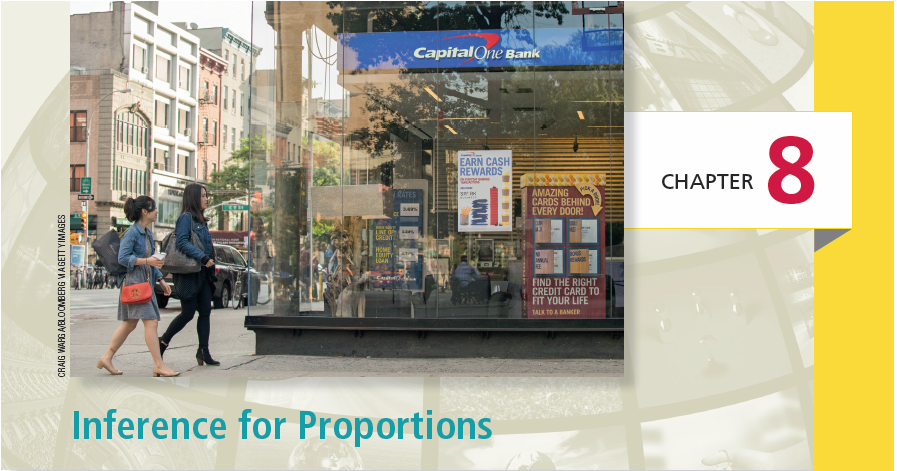Inference for Proportions

CHAPTER OUTLINE
Introduction
We frequently use data on categorical variables, expressed as proportions or percents to make business decisions.
- PricewaterhouseCoopers surveys CEOs and asks them whether or not they are confident that the revenue of their company will grow in the next year.1
- CapitalOne offers a credit card to a carefully selected list of potential customers. The card will give cash-back rewards. What percent choose to sign up for this card?
- Samsung wants to know what proportion of its cell phone users choose a Samsung product when they decide to purchase a new phone.
When we record categorical variables, such as these, our data consist of counts or of percents obtained from counts.
The parameters we want to do inference about in these settings are population proportions. Just as in the case of inference about population means, we may be concerned with a single population or with comparing two populations. Inference about one or two proportions is very similar to inference about means, which we discussed in Chapter 7. In particular, inference for both means and proportions is based on sampling distributions that are approximately Normal.
We begin in Section 8.1 with inference about a single population proportion. Section 8.2 concerns methods for comparing two proportions.
